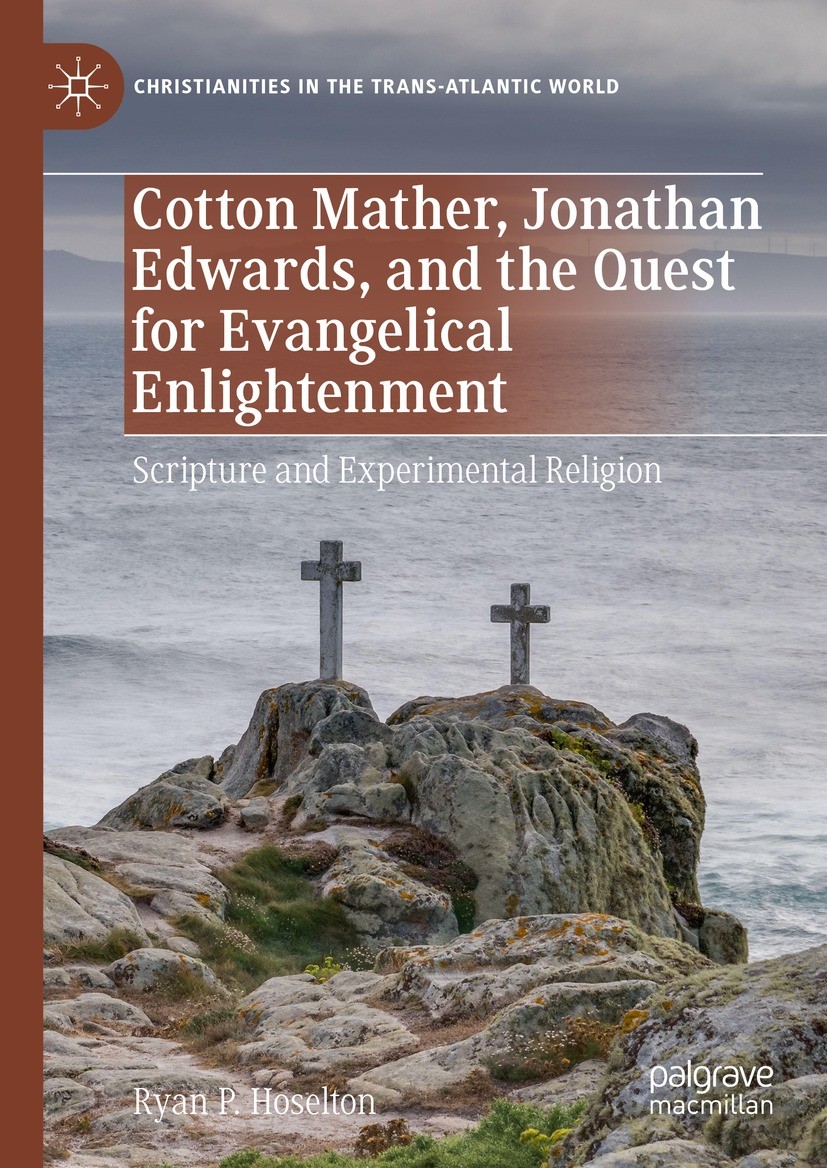| 书目名称 | Cotton Mather, Jonathan Edwards, and the Quest for Evangelical Enlightenment | | 副标题 | Scripture and Experi | | 编辑 | Ryan P. Hoselton | | 视频video | http://file.papertrans.cn/240/239033/239033.mp4 | | 概述 | Builds upon and bridges growing scholarship on Mather’s and Edwards’ exegesis by bringing them together in one study.Focuses particularly on their pursuit of experimental knowledge and piety.Contextua | | 丛书名称 | Christianities in the Trans-Atlantic World | | 图书封面 |  | | 描述 | .This book explores the early evangelical quest for enlightenment by the Spirit and the Word. While the pursuit originated in the Protestant Reformation, it assumed new forms in the long eighteenth-century context of the early Enlightenment and transatlantic awakened Protestant reform. This work illuminates these transformations by focusing on the dynamic intersection of experimental philosophy and experimental religion in the biblical practices of early America’s most influential Protestant theologians, Cotton Mather (1663-1728) and Jonathan Edwards (1703-1758). As the first book-length project to treat Mather and Edwards together, this study makes an important contribution to the extensive scholarship on these figures, opening new perspectives on the continuities and complexities of colonial New England religion. It also provides new insights and interpretive interventions concerning the history of the Bible, early modern intellectual history, and evangelicalism’s complex relationship to the Enlightenment. . | | 出版日期 | Book 2023 | | 关键词 | evangelicalism; Protestant Reformation; spiritual enlightenment; early America; long eighteenth-century | | 版次 | 1 | | doi | https://doi.org/10.1007/978-3-031-44935-2 | | isbn_softcover | 978-3-031-44937-6 | | isbn_ebook | 978-3-031-44935-2Series ISSN 2634-5838 Series E-ISSN 2634-5846 | | issn_series | 2634-5838 | | copyright | The Editor(s) (if applicable) and The Author(s), under exclusive license to Springer Nature Switzerl |
The information of publication is updating

书目名称Cotton Mather, Jonathan Edwards, and the Quest for Evangelical Enlightenment影响因子(影响力)

书目名称Cotton Mather, Jonathan Edwards, and the Quest for Evangelical Enlightenment影响因子(影响力)学科排名

书目名称Cotton Mather, Jonathan Edwards, and the Quest for Evangelical Enlightenment网络公开度

书目名称Cotton Mather, Jonathan Edwards, and the Quest for Evangelical Enlightenment网络公开度学科排名

书目名称Cotton Mather, Jonathan Edwards, and the Quest for Evangelical Enlightenment被引频次

书目名称Cotton Mather, Jonathan Edwards, and the Quest for Evangelical Enlightenment被引频次学科排名

书目名称Cotton Mather, Jonathan Edwards, and the Quest for Evangelical Enlightenment年度引用

书目名称Cotton Mather, Jonathan Edwards, and the Quest for Evangelical Enlightenment年度引用学科排名

书目名称Cotton Mather, Jonathan Edwards, and the Quest for Evangelical Enlightenment读者反馈

书目名称Cotton Mather, Jonathan Edwards, and the Quest for Evangelical Enlightenment读者反馈学科排名

|
|
|
 |Archiver|手机版|小黑屋|
派博传思国际
( 京公网安备110108008328)
GMT+8, 2025-11-12 00:31
|Archiver|手机版|小黑屋|
派博传思国际
( 京公网安备110108008328)
GMT+8, 2025-11-12 00:31


